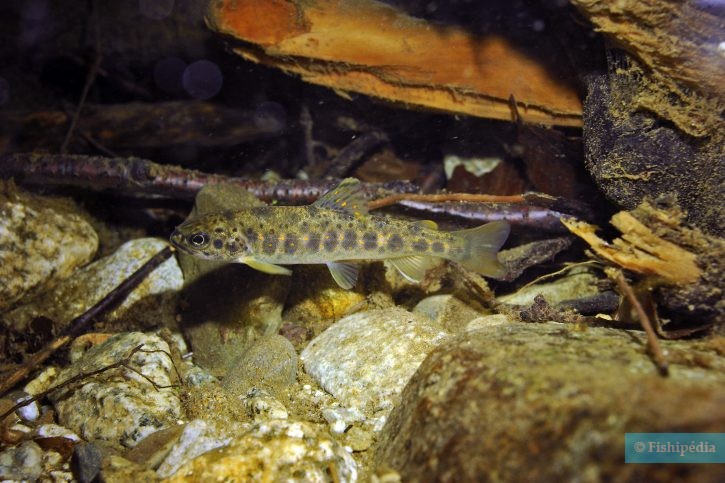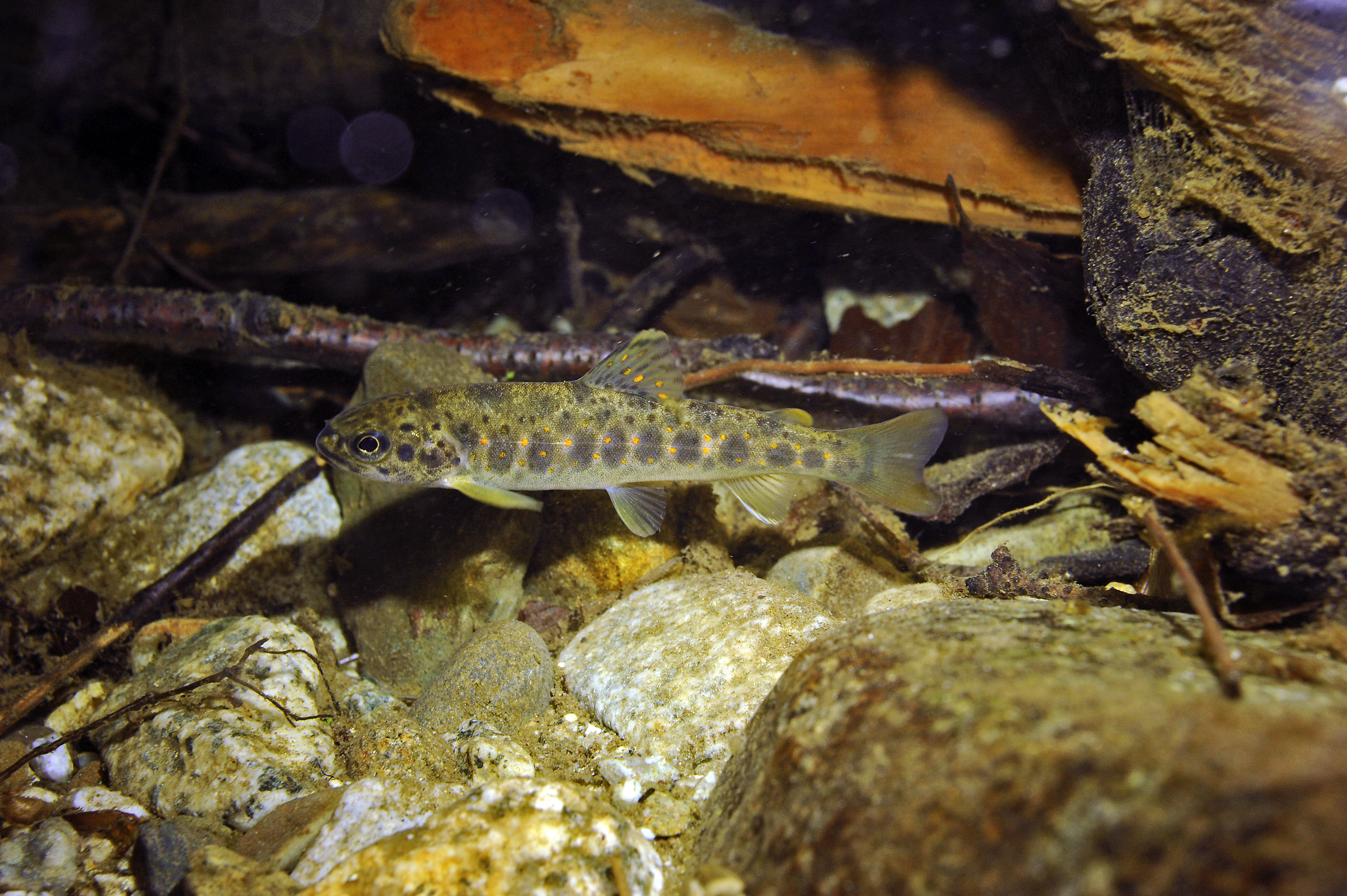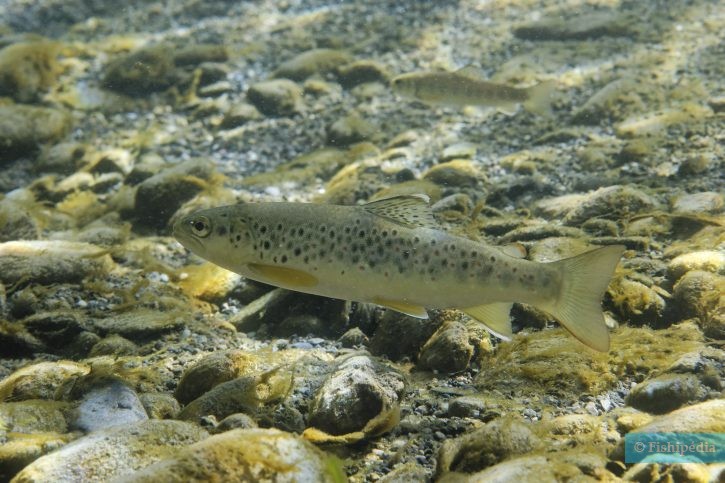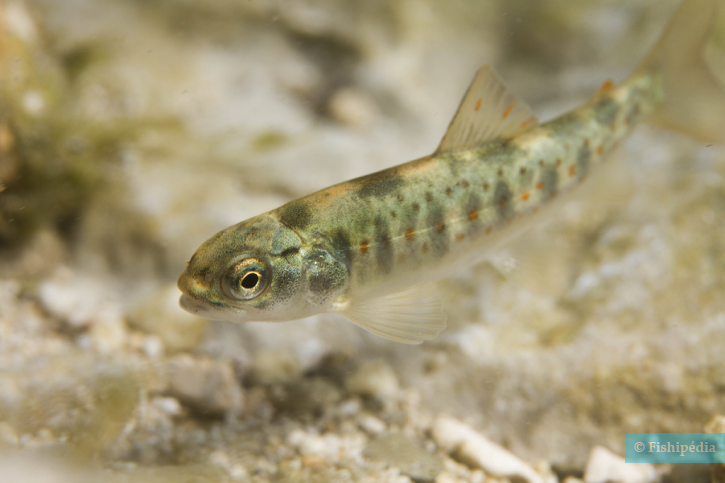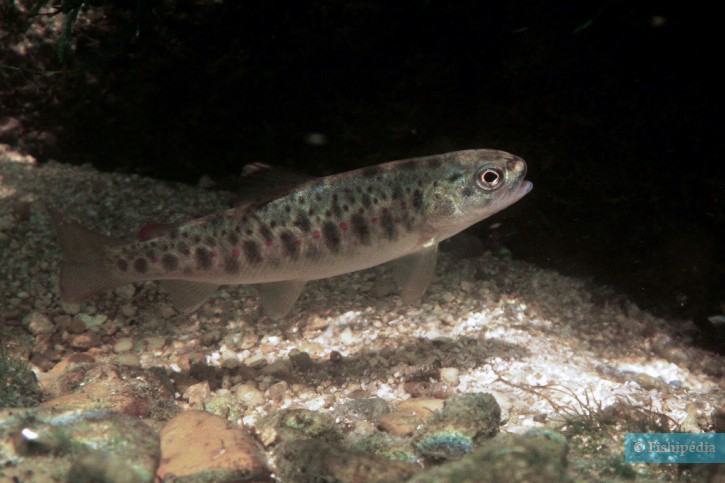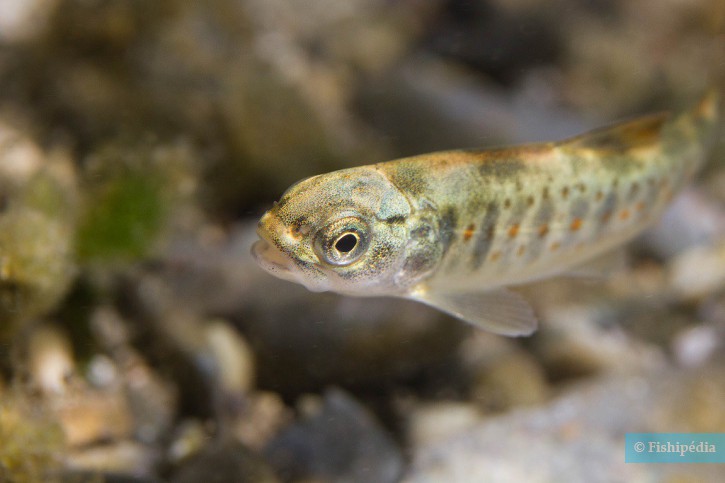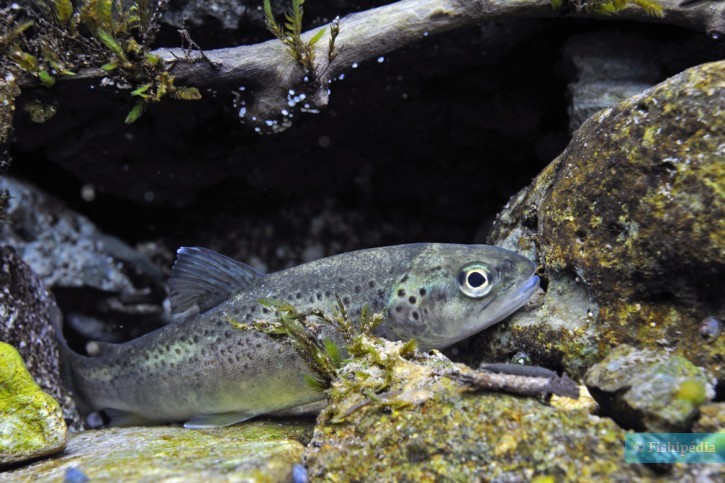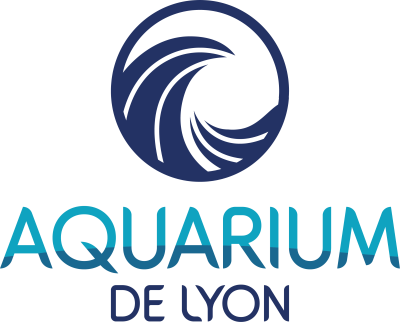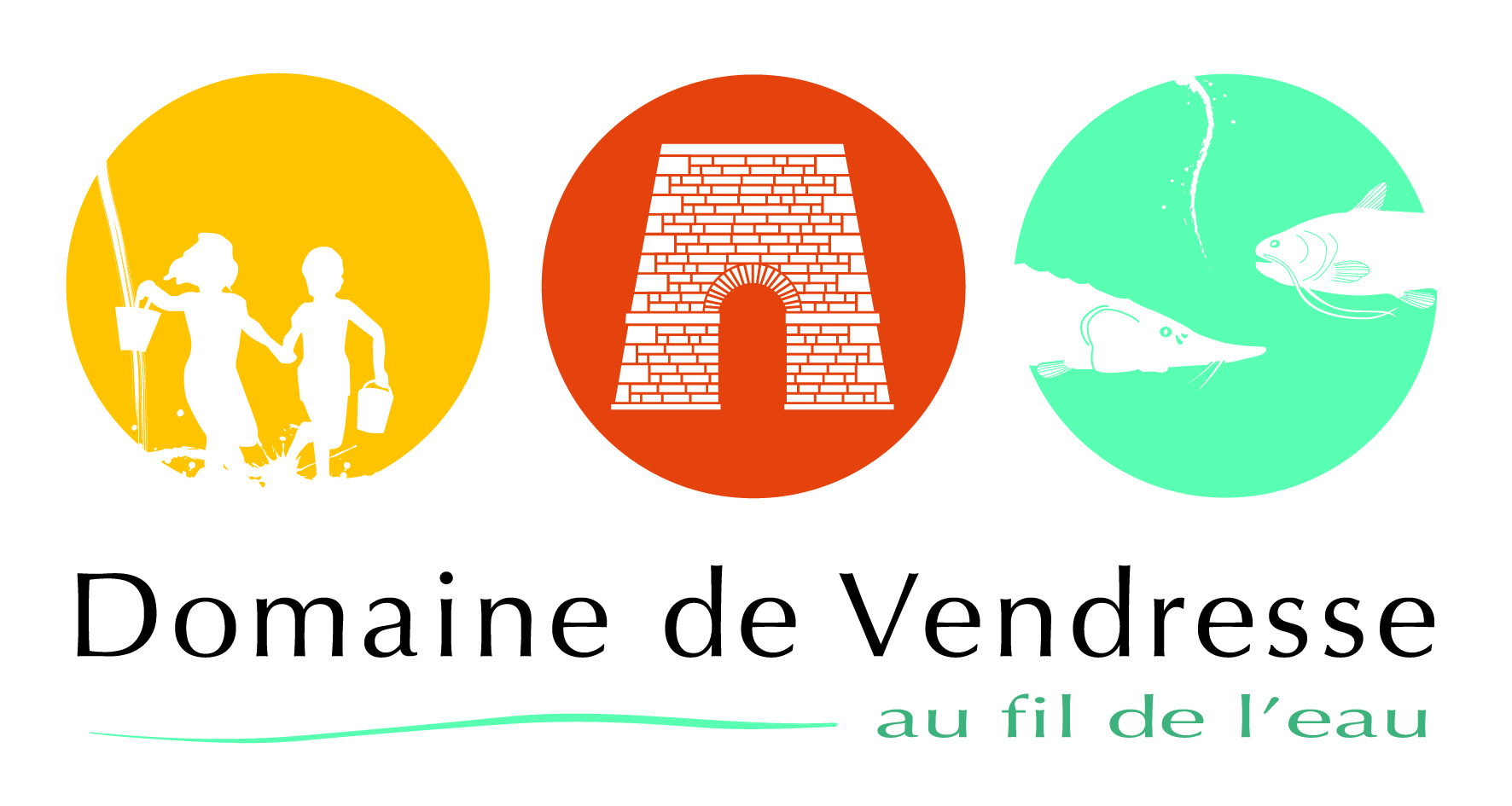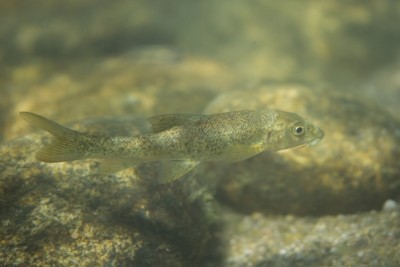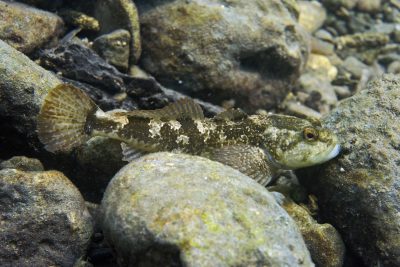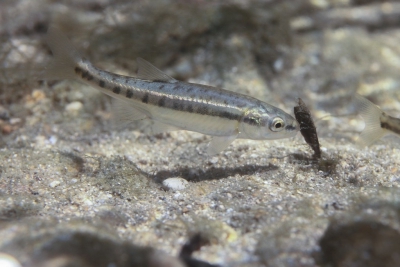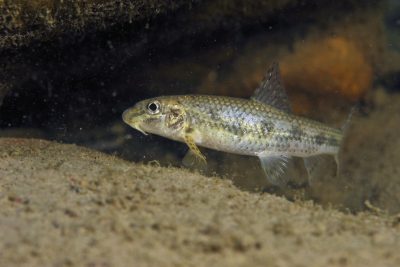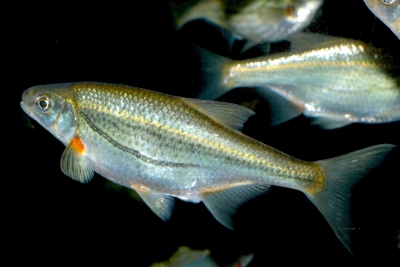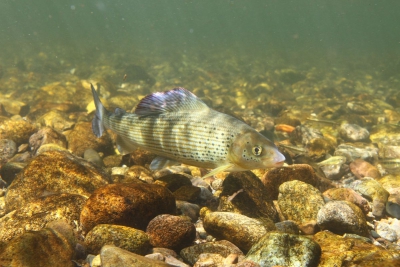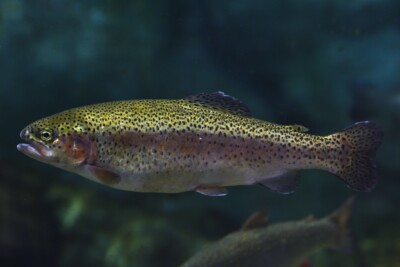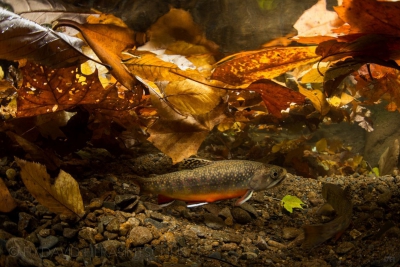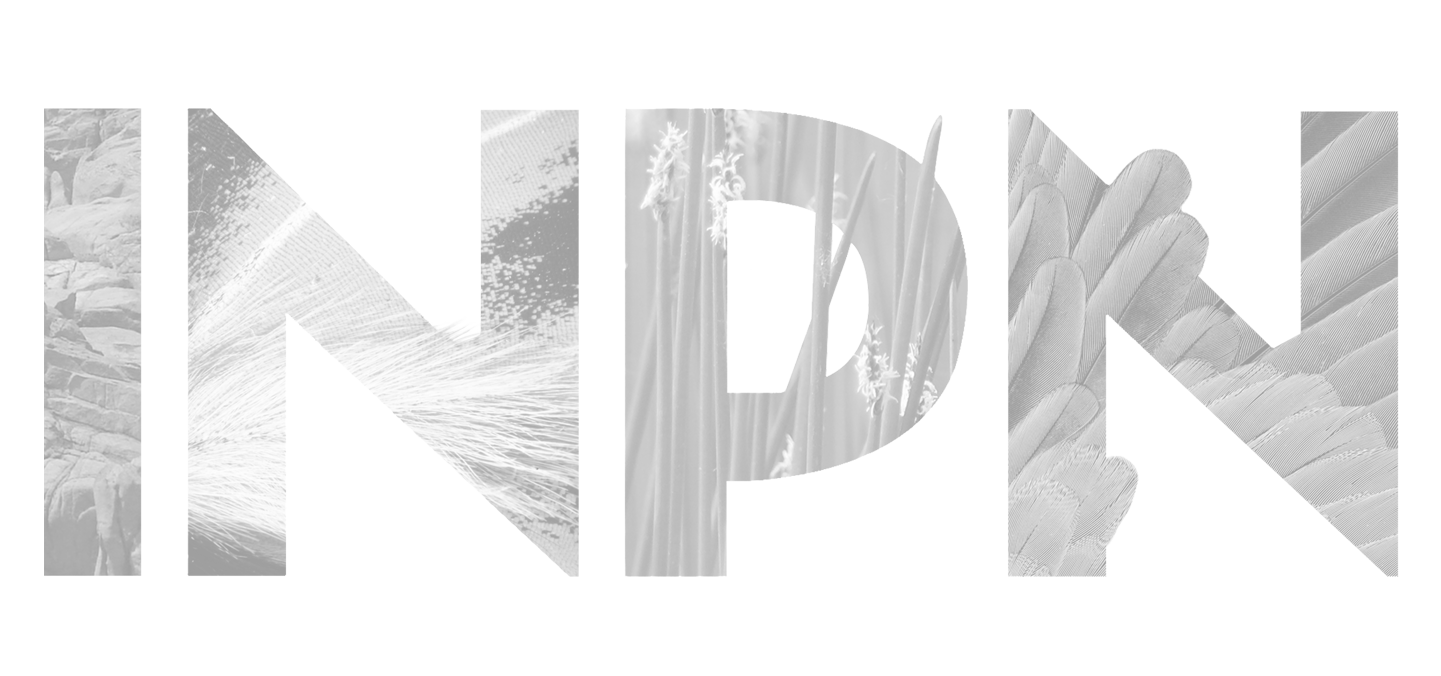Introduction
The Salmo trutta, more commonly known as the brown trout, is a cold-water predatory species native to Europe.
Who is it?
Morphology
-
Average size80 cm
-
Maximum size110 cm
-
Patternponctuations
-
Average size80 cm
-
Maximum size110 cm
-
Patternponctuations
How to recognize This fish ?
There are three common forms of brown trout: river brown trout, lake brown trout, and sea brown trout.
Generally, brown trout have a slender body with a strong head perfectly adapted for swimming in fast-flowing water. Juveniles of the three forms are difficult to differentiate. However, the differences become more pronounced with age. In rivers, brown trout are usually brown in color with pearly flanks. They are covered in black spots and red dots that vary greatly depending on the specific habitat, and sometimes even within the same river.
For example, Basque brown trout is characterized by very large black spots and few, if any, red spots, while Mediterranean brown trout has numerous small black spots, and Corsican brown trout, which could eventually become a separate species, has a small number of large vermillion red spots on a gray background.
Sea and lake brown trout are more robust and silver in color, differing mainly by the shape of the black spots covering their bodies.
Sexual dimorphism
Dimorphism not specified.
Behaviour & Life cycle
-
dietcarnivorous
-
Sociabilitysolitary
-
territorialNo
-
Way of livingdiurnal
The brown trout is strictly carnivorous. It is an opportunistic predatory species that feeds on fish, insects, crustaceans, and even small amphibians. With age, it can also become cannibalistic, preying on smaller individuals of its own species. Its feeding behavior varies depending on water temperature and light levels.
Reproduction
-
Reproductionovipare qui enfouit ses œufs
The brown trout is an oviparous fish that buries its eggs. During the breeding season, it undertakes migrations: River and sea brown trout swim upstream in tributaries over long distances, while lake brown trout move through nearby tributaries.
Unlike salmon, the brown trout reproduces multiple times throughout its life.
Harmless species
This species does not pose a particular danger to humans if encountered in its natural habitat.
Origin and distribution
Geographic distribution & Conservation
State of stocks and sustainable fishing with Ethic Ocean
Brown trout is a salmonid species that has been successfully farmed for over a century and is intensively produced in several European countries. In the wild, brown trout are mainly targeted by recreational fishing. Their populations are not currently endangered. Learn more
Conservation status of populations (IUCN)
What is its habitat?
Natural environment characteristics
-
Temperature12 - 20 °C
-
FlowStrong
Biotope presentation
As you may have gathered, brown trout reside in various types of habitats depending on their lineage.
Initially, juveniles live in the lower reaches of rivers, in shallow, fast-flowing water where they encounter few competing species. They stay there for 1 to 3 years in France, and up to 7 years in higher latitudes. After this period, adult brown trout occupy three characteristic habitats:
- Adult river brown trout reside in fast-flowing rivers. When hunting, they are often found in eddies and currents, typically behind a large rock, waiting for prey to pass by. After these periods, they rest in deeper or shaded areas with slow currents. Corsican river brown trout also occupy other ecological niches, taking advantage of the absence of competitors.
- Lake brown trout continue to grow in deeper lake waters.
- After breeding in freshwater, sea brown trout gradually return to coastal areas. Little information exists about the niche they occupy once back in the sea.
Species of the same biotope
To go further
Sources & Contributions
Participation & Validation
The Fishipedia team and specialist contributors are committed to providing high-quality content. However, although the information comes from scientific sources or testimonials from specialists, the cards may contain inaccuracies.

Benoit Chartrer

Patrick Chartrer

Silvia Gomez
Translation
Translation done with the valuable contribution of our translators, who make this information available to a wider audience. We sincerely thank them for their commitment.
In collaboration with : Reflets d'eau douce
Bibliographic references
- - GBIF
- - Les Poissons d'eau douce de France - Eric Feunteun - Jean Allardi - Philippe Keith - Biotope Edition - 2011. Collection Inventaires & Biodiversité, publication scientifique du Muséum
